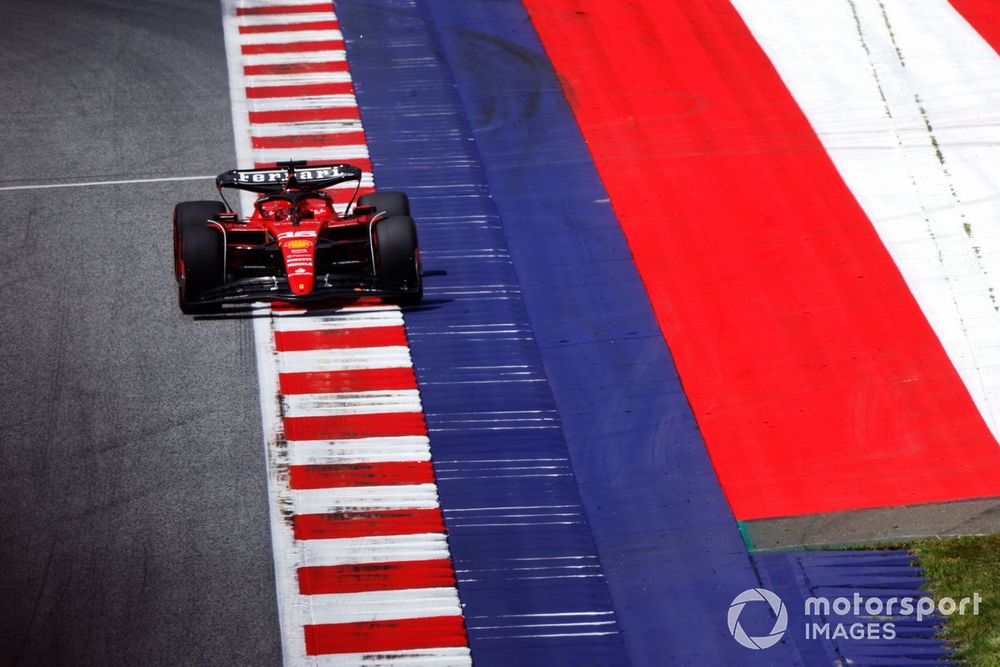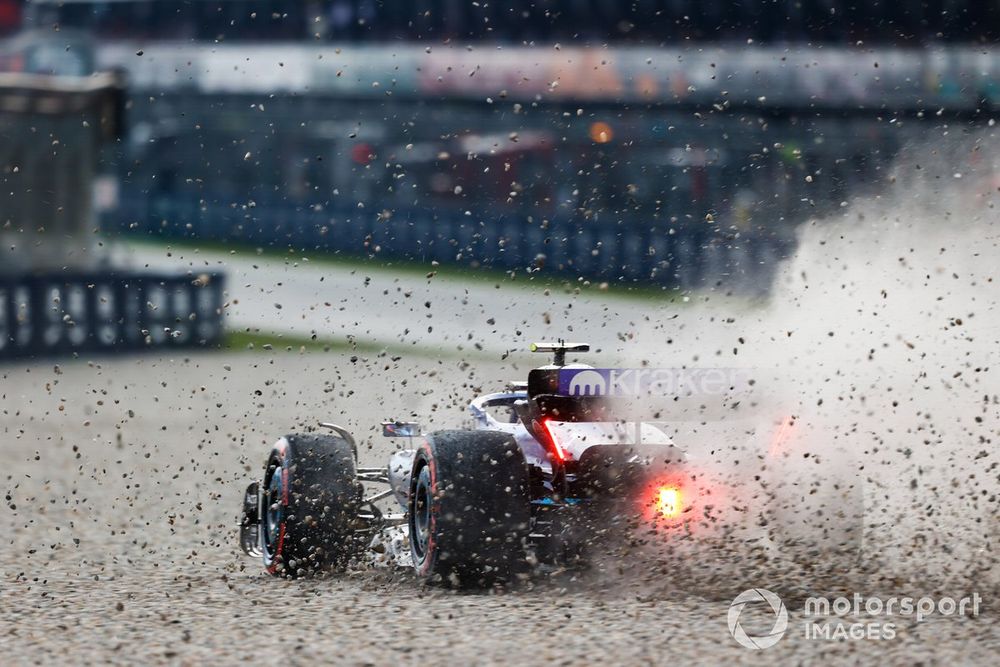
"Aren't these the 20 best drivers in the world or what?"
No, given the strength and depth of talent in other motorsport categories. But, if you found yourself shrieking that or likewise into the internet or some other unfortunate place after Formula 1 qualifying at the 2023 Austrian Grand Prix, you're the problem. Not the rules and not the drivers.
Since the FIA changed the approach to the track limits rules at the start of 2022, the final two corners of the Red Bull Ring have been a flashpoint. Where the white line was always defined as the edge of the track in the regulations, inconsistency in rule application allowed was previously allowed to creep in over car positioning on kerbs. Now the situation is absolute.
In Austria last year, 16 drivers had times deleted in qualifying – up from eight across two Red Bull Ring qualifying sessions in 2021. In 2023, this rose to 47. Yes, a big year-on-year increase but kerb riding is a little different this season with the improved ride platforms the teams have been chasing in eliminating porpoising.
And that number is actually down from 165 laps being deleted in Friday's practice. By Q3, just three times were taken away.
After clinching pole, Max Verstappen claimed "it almost looked like we were amateurs out there" due to the number of laps getting lost, which chimed with social media and TV pundit outrage about the situation.
But both points miss the key one. One that Verstappen himself made in the post-qualifying press conference.

"It's super hard to judge around here," he explained, having pointed out the challenge of tyres losing grip as they heat up in a short, rapid layout that allows next to no time for the tyres to breathe and cool.
"You have all the compressions as well. Where, if you hit it slightly wrong, the car immediately drops away from you or understeers and then it's super easy to go over the white line.
"It looked very silly. It almost looked like we were amateurs out there – the number of lap times that were getting deleted.
While people wail about 'how things used to be' and that 'this isn't a problem in Monaco,' this, again, is irrelevant, irritating noise.
"Some of them were so marginal. We spoke about it in the [drivers'] briefing before. That, when it's very marginal, it's impossible to judge if it's out or in, and they were still getting deleted. So, I don't think it was a good look. Of course, people can say, 'Yeah, well, then you just stay within the white lines'. Well, if it was that easy, then you can take my car and try it. But probably you won't even get up to speed in time."
This is the crux of the matter. What the drivers are being tasked to do in Austria is hard.
Consider Charles Leclerc's final lap in Q3. He chucked his SF-23 into the final corner with such wild abandon, GPS traces show he was ahead of Verstappen's delta time as he rapidly rotated his Ferrari's rear to the right and shot onto the exit kerbs leading onto the pitstraight. But it was too much. The Ferrari squirmed and Leclerc lost out.

Brilliant stuff, but a slip enough to cost pole by 0.048s. Leclerc also rued time lost in the early corners on his final Q3 run as "Turn 3 was not ideal" and "Turn 1 had quite a lot of snaps".
But he was trying to do something extremely difficult and should gain considerable credit for having a go and nearly beating a faster car, even if the margins between Red Bull and Ferrari are smaller in qualifying.
Those drivers who lost laps for going too wide in Turns 9 and 10 are not "idiots" as Verstappen said in their defence – the Dutchman was furious to have an early Q2 time deleted as part of the saga. But his response was sensational.
Despite running "a bit more aware of where to put the car not to risk being looked into", he actually went quicker than the time he lost sliding wide out of the final corner. In the other RB19, Sergio Perez didn't adapt and paid a massive price. That's the nature of the game here in Austria.
Verstappen is right to point out that it would be too costly to install temporary gravel traps at the contentious points on this track, which can't have permanent ones as it hosts MotoGP and in that category, such safety features are actually more dangerous in the event of a rider fall.
And while people wail about "how things used to be" and that "this isn't a problem in Monaco," this, again, is irrelevant, irritating noise.
Suggestions from the drivers such as widening white lines or making them somehow felt in the cockpit aren't necessary either because, by changing the rules as the FIA did in 2022, it made the situation much better – ending the track limits debate at many circuits because the white line definition was bolstered.

That's just how it should be. Clear cut, no arguing.
If the drivers struggle with the considerable challenge of staying on the right side of that limit with their machines going light over the compression of the final corner here in Austria, and the low visibility making that spot even harder (plus being in a factor in why several drivers lost times for going too wide in the penultimate corner here too), so be it.
It makes things even better when they pull off a valiant but slower effort as Leclerc did. And it significantly adds a spectacle for this venue – just as Monaco qualifying is a one-off challenge compared to the other street tracks.
It's about pushing things to the maximum and if it goes too far there is now a clear sanction. That itself is a spectacle and drivers shouldn't be afraid of looking like "amateurs"
Ahead of sprint qualifying, where the initially wet track surface meant it was predicted the drivers wouldn't push the white lines limit at the final corners due to the increased risk of spinning, the different trial presented was clear, even though it never came to pass.
But they surely would've understood the risk and so stayed away as much as required. In the dry, it's about pushing things to the maximum and if it goes too far there is now a clear sanction. That itself is a spectacle and drivers shouldn't be afraid of looking like "amateurs", per Verstappen when considering exactly what he then said as part of his impassioned, articulate and pleasing response.
The track limits complaints from outside are the issue, as these then spiral into the drivers' thinking on the matter.
Leave things how they are in Austria right now and just enjoy the challenge.








